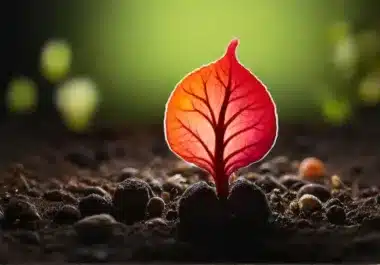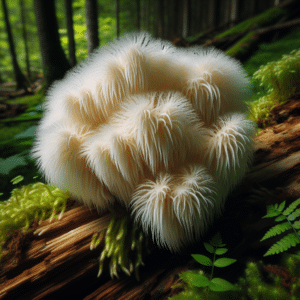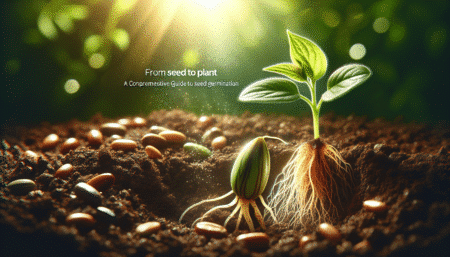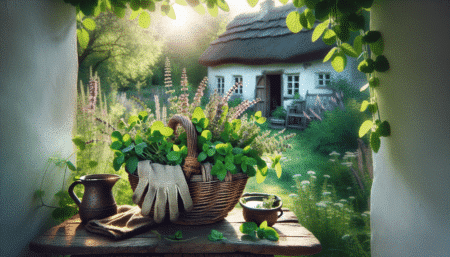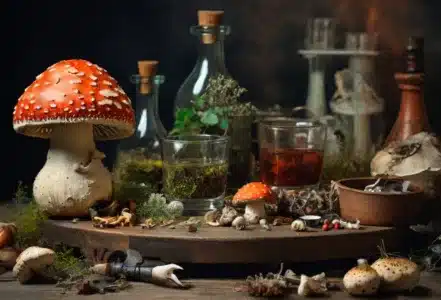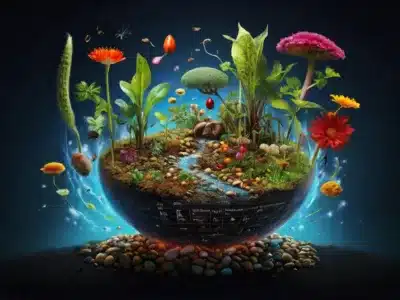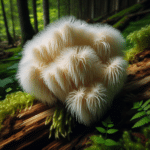1. the fascinating world of seed germination
2. germination of seeds: The first step towards life
3. method 1: Classic germination - water and heat as the key to success
4. method 2: stratification - mimicking natural conditions for successful germination
5. method 3: Scarification - paving the way for the roots
6 Method 4: Use of plant hormones to promote the germination process
7. comparison of methods - advantages and disadvantages of the different approaches to seed germination
8. tips and tricks for successful seed germination in your garden or home
9 Conclusion: Discover the potential in every tiny seed
Here you can find our growth hormones and similar accessories for germination!
In this compact blog intro, we would like to introduce you to fascinating methods for germinating seeds. Find out how you can bring your seeds to life with simple tips and tricks. From the right temperature and light conditions to optimal watering and the use of novelties such as cold germinators or special soil - here you will find an overview of everything you need to know. Immerse yourself in the world of seed germination and discover the many ways to successfully germinate your plants. And don't forget to subscribe to our newsletter to receive regular updates on new videos and valuable knowledge on the subject.
1. the fascinating world of seed germination
Seed germination is a fascinating process that lays the foundation for the life of a plant. It is amazing to watch a tiny seed sprout into a tender seedling and gradually develop into a full-grown plant. However, the successful germination of seeds requires certain conditions and methods. A simple method for germinating seeds is to soak them in water and keep them at the optimum temperature. The water allows the seed to absorb moisture and start the germination process. The right temperature also plays an important role, as different plant species require different temperatures for germination. Another method that is used for some types of seeds is stratification. Here, the seeds are artificially exposed to cold temperatures to imitate natural conditions. This cold period signals to the seed that it is time to germinate and start growing.
Scarification is another interesting method for promoting the germination of certain types of seed. In this technique, the outer layer of the seed is slightly damaged or scraped off to clear the way for root formation. Another approach to support the germination process is to use plant hormones. These hormones act as signaling agents and promote the growth of the seedlings. They can be used in the form of special preparations or natural substances such as algae extracts. The different methods of seed germination each have their advantages and disadvantages. It is important to consider the needs of the specific plant species and select the appropriate method. With a few tips and tricks, you can successfully germinate seeds. The right amount of water, light and temperature are crucial for success. Additional knowledge about the needs of different plant species and regular care can also help. Overall, the world of seed germination offers a wide range of exciting possibilities. With the right methods and the necessary knowledge, you can discover the full potential of each tiny seed.
2. germination of seeds: The first step towards life
The germination of seeds is the first step in the life of a plant. It is fascinating to observe how a tiny seed develops into a living and growing plant. There are various methods to aid the process of successful germination. One simple method is to soak the seeds in water and keep them at the optimum temperature. The water provides the seeds with moisture and allows them to swell, which stimulates the germination process. The optimum temperature varies depending on the plant species and can usually be found on the internet or in specialist literature. However, special conditions are required for some plant species. Cold germinators, for example, require low temperatures to overcome their dormant state and germinate. A method called stratification is used here, in which the seeds are exposed to cool temperatures for a certain period of time. Another interesting method is the scarification of seeds. This involves slightly damaging or roughening the outer shell or husk of the seeds to pave the way for root growth. This can be achieved by lightly abrading or scoring the seed coat.
The presence of light can also be an important factor in germination. Some plant seeds need light to break their dormancy and germinate. Here it is important to know the specific requirements of each plant species. There are many other methods and techniques to promote seed germination. Each has its own advantages and disadvantages, depending on the needs of the plant and the resources available. With this knowledge, you can now experiment and make your own experiences with seed germination. Discover new possibilities by reading up on novelties or finding tips in newsletters or videos. The world of seed germination is diverse and offers endless possibilities for all hobby gardeners out there. So let's get started - bring your seeds to life!
3. method 1: Classic germination - water and heat as the key to success
The classic germination method is a proven and simple method of bringing seeds to life. Water and heat play a crucial role in the success of the germination process. As soon as the seeds are placed in moist soil, the water slowly absorbs into the outer layer of the seed coat, activating the germination process. The ideal temperature for germination varies depending on the plant species, but generally the optimum temperatures are between 20-25 degrees Celsius. By providing sufficient water, the seed is supplied with moisture, which leads to the absorption of nutrients - an essential step for the growth of a healthy plant. The warmth also ensures that the metabolism is activated and important biochemical reactions can take place. This combination of water and heat causes the seed to germinate and develop into a tender plant.
It is important to ensure that there is sufficient moisture during the germination process so that the seed does not dry out. At the same time, however, waterlogging should be avoided as this can increase the risk of fungal infestation. A well-drained substrate and regular watering are therefore essential. The classic germination method is particularly suitable for many types of seed and offers an easy way to take the first step towards life. With water and heat as key components, it is possible to successfully support the germination process and grow healthy plants. If you would like to learn more about the fascinating world of seed germination, you will find exciting news, tips and tricks as well as informative videos on the subject in our newsletter. Discover the potential of every tiny seed and immerse yourself in the knowledge of plants and their germination!
4. method 2: stratification - mimicking natural conditions for successful germination
The stratification method is a fascinating way to mimic natural conditions for successful seed germination. In this method, the seeds are subjected to a cold treatment to mimic natural winter conditions in nature. This treatment activates the growth hormone in the seed and stimulates germination. To use this method, you can place your seeds in moist substrate or sand and then store them at low temperatures for several weeks. The exact duration varies depending on the plant species, so it is important to find out about the specific requirements beforehand. For example, some plant species require a longer cold period than others. During the cold treatment, it is important to ensure that the substrate does not dry out and remains evenly moist.
After the specified time has elapsed, you can remove the seeds from the cool area and allow them to continue germinating under normal conditions. You will find that many plant seeds germinate faster and more effectively using this method than without it. Stratification offers an easy way to mimic the natural life cycle of plant seeds and improve their germination rate. With a little knowledge of the specific requirements of your seed species, this method can be used successfully. Give it a try and discover the potential in every tiny seed! For more tips and tricks on seed germination as well as an overview of new developments and innovations in the plant world, subscribe to our newsletter and watch our informative video. With the right knowledge and a little patience, you can successfully grow plants from seed and fill your garden or home with green splendor.
5. method 3: Scarification - paving the way for the roots
Scarification is a fascinating way to pave the way for the roots when germinating seeds. This technique is often used with cold germinators as it mimics their natural conditions and facilitates germination. In this method, the seeds are subjected to a mechanical or chemical treatment to break their outer shell and allow access of water and oxygen. This accelerates the germination process. There are various ways of carrying out scarification. One simple method is to soak the seeds in water overnight or scrape them lightly to soften their outer layer. This allows them to be better moisturized and start germinating faster. Another option is to use plant hormones or enzymes to help break open the seed coat. These substances help to break down the tissue around the embryo, clearing the way for root growth. It is important to note that not all seeds benefit from scarification.
Some species already have thinner shells and germinate easily without additional treatment. It is advisable to obtain information about the specific seed in advance or to consult experts. Scarification is an effective way to increase the germination rate of seeds and speed up the process overall. It is particularly useful for more difficult seeds or for gardeners who would like to try out new plant species. If you would like to learn more about this fascinating method, you should subscribe to our newsletter. In it, we regularly provide tips and tricks for successful seed germination and inform you about innovations in the field of horticulture. You will also find practical instructions on how to carry out scarification in our video on the subject. With this knowledge, you will be well equipped to use the scarification method in your own garden and successfully support the germination of your seeds.
6 Method 4: Use of plant hormones to promote the germination process
Another fascinating method for promoting seed germination processes is the use of plant hormones. Plant hormones are natural chemical compounds that are produced in the plants themselves and regulate various growth and development processes. The targeted addition of these hormones can effectively stimulate germination in certain types of seeds. An important aspect when using plant hormones is the correct dosage. Too much or too little hormones can negatively influence or even prevent germination. It is therefore important to obtain precise information about the needs of the respective seed species beforehand and to act accordingly. A well-known plant hormone that is often used to promote germination is gibberellic acid. This substance can activate the process of cell division and elongation growth, which can be particularly helpful for seed species that are difficult to germinate. To use plant hormones successfully, they should either be applied directly to the seeds or mixed with the irrigation water.
This allows the hormones to reach the site of action directly and develop their full effect. However, it is important to note that not all seed species react equally positively to treatment with plant hormones. Some species already have enough of their own hormones to enable successful germination, while others are particularly dependent on external support. Overall, the use of plant hormones offers an interesting opportunity to promote the germination processes of seeds and bring difficult-to-germinate species to life. However, it is advisable to inform yourself thoroughly about the needs of the respective seed species beforehand and to proceed accordingly. With the right knowledge and the right dosage, you can achieve impressive results and fill your garden or home with flowering life.
7. comparison of methods - advantages and disadvantages of the different approaches to seed germination
Seed germination is a fascinating process that marks the first step in the life of a plant. There are various methods to encourage seed germination and make it successful. Below we will compare seven different approaches to seed germination and look at the advantages and disadvantages of each. The classic method of germination relies on water and heat as the key to success. By placing the seeds in moist soil or a wet cloth and keeping them at the optimum temperature for a certain period of time, the seed coat is allowed to swell and germination is initiated. Another method is stratification, which attempts to mimic natural conditions. This is done by cooling the seeds for a certain period of time in a moist substrate. This method is particularly suitable for cold germinators, whose germination requires lower temperatures. Scarification is another way of paving the way for the roots. Here, the outer layer of the seed coat is roughened or slightly scarified to enable faster water absorption.
Plant hormones can also be used to specifically promote the germination process. These hormones help to stimulate the growth of the embryo in the seeds and thus achieve faster germination. There are advantages and disadvantages to all methods. Classic germination is simple and requires no special tools, but success rates can vary. Stratification requires patience and special temperature control, but can be very effective with certain types of seeds. Scarification can reduce the risk of germination problems, but also carries some risk of damage to the seed coat. The use of plant hormones offers quick results, but requires additional effort. Overall, the different methods of seed germination offer a wide range of options for gardeners. Each method has its own benefits and challenges, so it is important to consider the needs of the particular plant species and choose the right method. With the right tips and tricks and a little knowledge about the individual approaches, nothing stands in the way of successful germination.
8. tips and tricks for successful seed germination in your garden or home
The successful germination of seeds is an important step in bringing plants to life in your garden or home. To help you make this process successful, we would like to give you some tips and tricks. 1. the right temperature: Every plant has its own germination temperature requirements. Find out about the seeds you want to use and stick to the recommended temperatures. 2. water is key: Most seeds require sufficient moisture for successful germination. Make sure you water the seeds regularly, but don't overdo it, as too much moisture can also be harmful. 3. the right substrate: Use high-quality soil or special sowing soil for germination. This contains all the necessary nutrients and gives the roots a good start. 4. light or darkness: Some seeds germinate better in the dark, others need light to germinate.
Find out about the needs of your plants and place them accordingly. 5. be patient: Depending on the type of plant, germination can take anywhere from a few days to several weeks. Give the seeds enough time and give them room to grow. 6. ventilate regularly: Make sure your germinating seeds get enough fresh air by regularly ventilating the greenhouse or room. This helps to prevent mold growth. 7. share experiences: Find out about new methods and innovations relating to seed germination. Exchange ideas with other plant lovers and subscribe to newsletters or watch informative videos to expand your knowledge. 8. keep an overview: Keep a list or journal of your sowing and germination activities. Make a note of which methods worked well and which didn't so that you can be even more successful next time. With these tips and tricks, you can successfully germinate your seeds and soon be proud of your growing plants. Have fun experimenting and discovering the potential in every tiny seed!
9 Conclusion: Discover the potential in every tiny seed
Seed germination is a fascinating process that reveals the potential in every tiny seed. Whether they are cold germinators or species that require warm temperatures, every seed has the ability to germinate and bring forth new life. In our blog article, we have presented various methods for germination, such as the classic method with water and heat, stratification to mimic natural conditions and scarification to prepare the soil for root development. We have also highlighted the use of plant hormones to promote the germination process. There are numerous tips and tricks to achieve successful germination: The right temperature and sufficient water are important factors. Light also plays a decisive role in the development of young plants. By knowing about these different approaches, gardeners can prepare their seeds optimally and thus achieve maximum success.
Discovering the potential in every tiny seed allows us to transform our gardens or living spaces into blooming oases. It is amazing to see how a small seed grows into a magnificent plant. With our tips and advice, we want to help you make the most of this potential. If you would like to know even more, you are welcome to subscribe to our newsletter to receive regular updates on new articles and news about plants and seeds. This way you will always be up to date and can expand your knowledge. Seed germination is a simple yet fascinating process. With the right methods, tips and tricks, you too can successfully grow plants from seeds. Discover the potential in every tiny seed and let your garden or living space blossom in all its glory.
Further questions and answers on seed germination
How does germination take place?
Germination is the process by which a new plant is created from a seed. There are several steps that take place during germination. First, the seed absorbs water and swells. This softens the outer shell of the seed and causes it to break open. The embryo then begins to grow inside the seed. Next, the root forms from the embryo. The root grows downwards into the soil and absorbs water and nutrients. At the same time, the shoot develops above the soil surface. The shoot consists of the stem and the first leaves. The stem pushes upwards while the leaves unfold. The leaves are used to produce energy through photosynthesis. During the germination process, the young plant strives for light and continues to grow. It develops new roots to absorb nutrients and more leaves for photosynthesis. Germination is a crucial step in the life cycle of a plant. It allows it to grow from a tiny seed into a fully developed plant. Through this process, a single plant can produce many new seeds and thus preserve its species. Overall, germination is a fascinating biological development in which a plant unfolds its full potential and is able to reproduce successfully.
What is the best way to germinate seeds?
There are a few important steps to follow in order to germinate seeds in the best possible way. First of all, it is important to select high-quality seeds. Pay attention to the expiration date and preferably choose fresh seeds. Next, the seeds need to be pre-treated to improve their germination capacity. This can be done by soaking the seeds in water overnight or by scoring the seed coat with a knife. The next step is proper soil preparation. Choose a loose, well-drained soil that is rich in nutrients. Remove weeds and stones and loosen the soil. Plant the seeds according to the instructions on the seed packet. Make sure to maintain the correct depth and spacing between each plant. After planting, the seeds should be watered regularly to ensure even moisture in the soil. However, avoid over watering as this can lead to rotting. Make sure the seedlings receive enough light. Place them in a sunny spot or use artificial lighting such as a plant lamp. Finally, patience is required. Seed germination can take different lengths of time depending on the plant species and conditions. Make sure that the ambient temperature and humidity are optimal to encourage germination. By following these steps, you can create the best conditions for successful seed germination.
How long does it take for the seeds to germinate?
The time it takes for the seeds to germinate depends on various factors. Basically, the germination time varies depending on the plant species and the respective conditions under which the seeds are sown. In general, however, it can take between a few days and several weeks for the seeds to germinate. An important influencing factor is the temperature. Most seeds germinate best at a constant temperature between 20 and 25 degrees Celsius. At lower temperatures, germination can be delayed or even fail altogether. Moisture also plays a decisive role. The seeds need sufficient moisture to swell and initiate the germination process. At the same time, however, there must be no waterlogging, as this can impair the growth of the young seedlings. The quality of the seeds is also a decisive factor. Fresh, high-quality seeds generally have a higher germination rate and germinate faster than old or inferior seeds. To summarize, there is no one-size-fits-all answer to the question of how long it takes for seeds to germinate. It always depends on the specific conditions. However, regular observation of the sowing bed and observing the optimum temperature and sufficient humidity are important prerequisites for successful seed germination.
What happens during the germination process?
Germination is the process by which a new plant is created from a seed. The process begins when the seed comes into contact with water. By absorbing water, the seed swells and is activated. It enters a state of dormancy and begins cell division. During the germination process, the seed goes through various stages. First, the root, also known as the radicle, develops from the seed. The root grows downwards and anchors the plant in the soil. The shoot, also known as the hypocotyl, then develops upwards. As soon as the shoot has reached the surface, the cotyledons open. These serve as the first leaves of the young plant and enable it to carry out photosynthesis. Throughout the germination process, various factors are important for the successful growth of the plant: a suitable temperature, sufficient moisture and sufficient oxygen. The germination process plays a crucial role in the reproduction of plants and enables them to reproduce and create new generations.
Further links
- https://www.pflanzenforschung.de/de/pflanzenwissen/lexikon-a-z/keimung-der-samen-283
- https://www.sign-lang.uni-hamburg.de/galex/konzepte/l285.html
- https://www.samenhaus.de/gartenblog/dunkel-hell-warm-kalt-wie-pflanzen-am-besten-keimen

